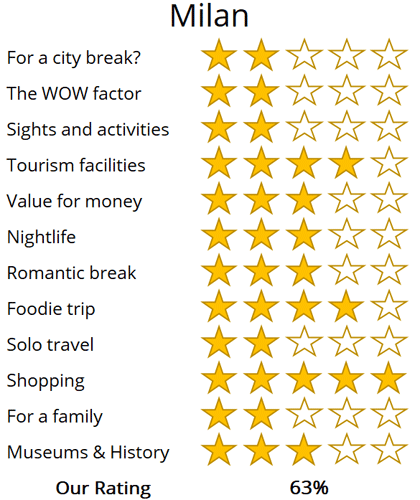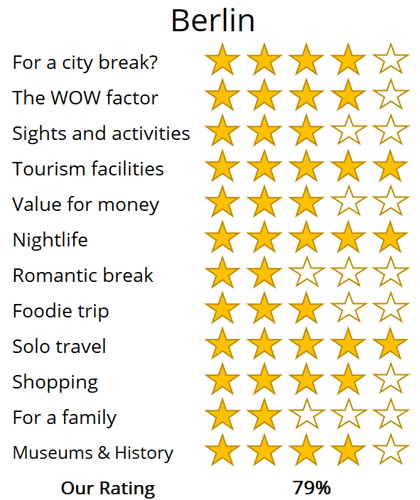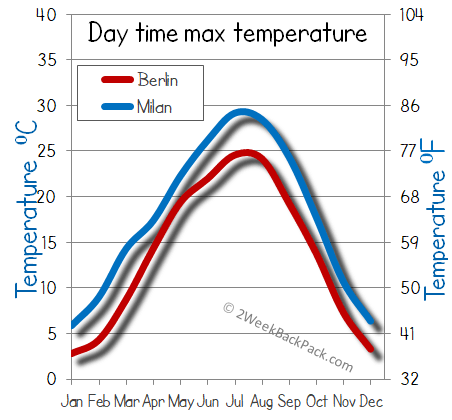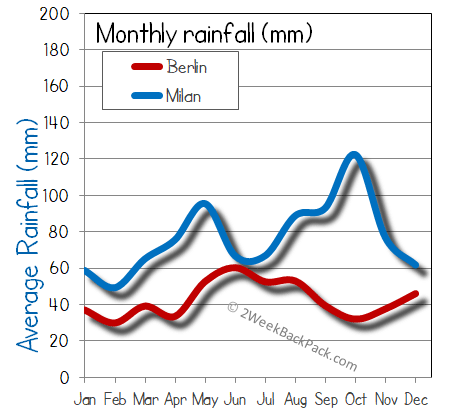WhereToGoForMyHoliday.com
The best destination comparison site!
WhereToGoForMyHoliday.com
The best destination comparison site!
Berlin or Milan, which is better for your holiday in 2024?
Berlin and Milan both offer unique and enticing experiences, but which one should you choose for your city break or holiday?
We recognise the difficulty in making this decision. While there is abundant information available on both destinations, clear guidance on which city better aligns with your travel preferences is often hard to find.
This article aims to provide an impartial comparison of Milan and Berlin, and hopefully help you to choose the best city to visit.
The article is structured into several sections, each of which can be directly accessed through the following links:
• Introduction to the cities
• Scores and ratings
• Which one should I, friends, or family visit?
• When to visit and weather
• Who is the city suited for?
• The perfect 48hours (with map)
• Tourism details (where to stay? airport details?)
Introduction to Milan and Berlin
Berlin is a city of thrilling contradictions. Traces of its turbulent past - fragments of the Berlin Wall, stark WWII monuments - remain visible. Yet gritty street art and highbrow museums coexist with beach bars and underground clubs in this dynamic, multicultural capital.
This dynamic city seamlessly fuses new and old, with leafy parks neighbouring modernist architecture and historic boulevards lined with cutting-edge galleries. Cosmopolitan yet complex, Berlin rewards those eager to delve beneath its myriad cultural layers.
Milan, synonymous with fashion and luxury shopping, is a city where appearances matter, and even its main tourist attraction, the Galleria, is a shopping arcade. While the historic centre is home to high-end boutiques and designer stores, the city’s more creative and edgy districts can be found on the outskirts.
Visitors should be aware that Milan that Milan does not have the breadth of monuments and standout tourist attractions as of other Italian cities. This is primarily a business focused city, which reveres in sophistication and looking good.

The gothic Duomo in central Milan – a highlight is the view from the roof

The TV tower (Berliner Fernsehturm) at Alexanderplat dominates the skyline of Berlin
High-level summary for Berlin and Milan
Summary
Where would I journey for a personal escape?
Berlin
Where would I send my parents for a memorable visit?
Berlin
Where's the ideal destination for my adventurous 19-year-old cousin?
Berlin
Where should my food-obsessed friend indulge their culinary passions?
Berlin
Note: The above comparisons are weather-independent and are based on travel during the most opportune times of the year. Details about the ideal travel seasons are elaborated upon later in this article.
In the sections that follow, you'll find a comprehensive comparison between these two fascinating cities. This includes recommendations on the duration of stay, the best times to visit, and tailored 48-hour itineraries for each city.
The final segment delves into practicalities for your travels, such as the best airport to fly into, the optimal districts for your accommodation, and insider tips, for when you come to explore the city.
We hope that you find all of this information useful, in planning your next exciting trip!
Destination details
How long to spend each city?
The main sights of Milan can be easily seen in a single day of sightseeing.
A second day allows time to explore the more atmospheric districts (Navigli, Zona Tortona) or provides extra time for shopping.
To capture the essence of the city, you need to experience the early evening drinks culture and the evening strolls where everyone wears their finest clothes. Milan may lack many tourist sights, but there surrounding region certain compensates with many enjoyable day trips.
This includes the historic towns of Bergamo, Brescia and Pavia, the beautiful lakes of Garda, Maggiore and Como, plus the Italian Alps. It is even possible to visit Verona as a day trip.
Berlin is one of those vibrant metropolises that always seems to have something new to discover on each visit.
You could easily spend months here and not do everything you want. That's really a result of just how big it is – more than 3.5 million people call it home, and it's the largest city in Germany by a long shot.
That said, a weekend or a three-day break is often ample for a whirlwind tour of the capital's most iconic points of interest.
The ultra-efficient U-Bahn, tram and buses make it easy to hop around the city, and fortunately, the main attractions are relatively close together; woven into the blocks of Mitte, Wedding and hipster East Central.

The Naviglio Grande canal runs through the heart of the Naviglio district

Berlin is a city that lives for it’s nightlife……
For the real Milan experience, you want to visit during the summer or winter fashion weeks (Sep/Oct or Feb/Mar), to mingle with models, stylish and Aficionados.
For a city break, Milan is almost year-round, but it is cool and possibly wet in the winter, while in hot August most residents head to the beach for the whole month.
One of the quirks of Milan is at the weekends, most of its affluent or mobile residents leave the city for the coast (summer), the Alps (winter) or lakes (Spring/Autumn), leaving the city to tourists and foreign shoppers.
It's simple: Spring to summer for Berlin.
From May to October, the locals of Berlin seem to come out of their winter hibernation, and the city is in full swing. However, in the summer expect high temperatures where the mid-day heat can easy be over 30C.
If you can handle the cold, snow and greyness, then Berlin is almost free of tourists in the winter. December in Berlin is rewarding, with enchanting Christmas markets at the Charlottenburg Palace and on Alexanderplatz.
If you're a city slicker with a soft spot for cool cafes (aka the coolest in Europe), great coffee, ethnic eateries, and urban vibes, then Berlin is arguably the place you should be for the rest of your life!
This is the epitome of a metropolis made up of individual neighbourhoods. Each has crafted its own unique character; some are hedonistic, others laid back and easy going, others packed with famous landmarks.
Those who want fresh air can escape to the Tiergarten and the beautiful Spreewald, but those are just supporting acts to the buzz of the downtown. It's not the place to be to attune yourself to nature, relax under the sun, or have swims in the sea.
If you have a passion for fashion, a flair for style, and are willing to indulge in a premium experience, Milan is your destination. The city stands out for its high-end designer shopping, trendsetting fashion, and its overall chic aesthetic.
However, some visitors may find Milan less captivating compared to the grandeur of Rome, the cultural richness of Florence, or the picturesque scenes of Venice. Milan is predominantly a business hub, where the hardworking ethos of its inhabitants is reflected in its cutting-edge fashion and refined nightlife.
Insight: There are few historic buildings in Milan, as many were destroyed by the extensive bombing of the second world war.

The distinctive Castello Sforzesco castle in Milan

The Bode Museum standing on the banks of the Spree River on the Museum Island (Museumsinsel), the cultural centre of Berlin
48 hours in Milan
The interactive map below shows a suggested tour for 48hours in Milan. The first day is shown in green and the second day is marked in yellow.
Day 1: Start your first day at Piazza del Duomo, the vibrant heart of Milan. This square is home to the stunning Gothic Duomo di Milano cathedral (be sure to visit the roof for spectacular views) and the elegant Galleria shopping complex, which houses a range of boutiques and high-end retailers. On the other side, you'll find the Palazzo Marino and the prestigious Teatro alla Scala.
In the afternoon, take time to explore the area around the Sforza Castle and Parco Sempione. Make sure to visit the Santa Maria delle Grazie convent, where you can admire the renowned “The Last Supper” fresco. Later, explore the fashionable Brera district, known for its blend of luxury stores and stylish residents.
Early evening is when Milan truly comes alive. As the workday ends, locals flock to bars for Apericena (a happy hour accompanied by a light buffet), where they enjoy fine cocktails and showcase the latest fashion trends. The Navigli district is an excellent spot to immerse yourself in this contemporary cultural tradition.

The Santa Maria delle Grazie convent, the location of one of the most controversial religious paints….
Day 2: For your second day, take a stroll from the Duomo, along the lively Via Torino, and continue onto Corso di Porta Ticinese, passing the impressive Basilica San Lorenzo Maggiore before entering the vibrant Navigli district. This canal-lined quarter brims with artisanal shops, trendy bars, and is a popular haunt for the city's youthful population.
The canals and train lines mark the boundary between Navigli and Zona Tortona, a district that has transformed from its gritty past to become Milan's hub of design and creativity. Today, designers breathe new life into former warehouses, creating the latest fashion trends. The area is subtly cool and epitomises the determination and fervour of Milan's residents.
For football enthusiasts, a tour of the iconic San Siro stadium is a must on your second day in the city.
Related articles: 48 hours in Milan

San Siro stadium, home to two of Italy’ greatest football teams
48hours in Berlin
Does the perfect 48 hours in Berlin even exist? With so many museums and vibey neighbourhoods to get through, it's hard to pack the highlights of the German capital into just two days. Still, the Berlin itinerary below gives it a go, offering everything from ancient Greek artefacts to cool pavement drinkeries and more.
Day 1: Morning in Mitte. As its name implies (Mitte = Middle), it's the hub of Berlin. You can settle in for a refined breakfast in the hidden courtyards of the Hackescher Höfe. The area is brimming with independent boutique stores and elegant tearooms. A few steps to the south take you beneath the needle-like Berliner Fernsehturm. A relic of Communist times, it's home to the fastest elevators in the world, while the lookouts at the top have jaw-dropping panoramas of the city (tickets cost €16.50).
A quick people-watching session on bustling Alexanderplatz and then move west to Museum Island. Culture vultures should take their time here. The Pergamonmuseum is a real highlight, with its priceless Assyrian statues and even the blue-tiled gates of Babylon. A pitstop at the nearby German Historical Museum is one for those who want to unravel the tale of the nation, with particular highlights in the collections that chronicle the world wars of the 20th century.
From there, walk down Unter den Linden to encounter the main artery of Mitte. That takes you to the world-famous Brandenburg Gate, which stands next to the glass-domed Reichstag Building. A picnic lunch in the Tiergarten park can be followed by a sobering walk through the Memorial to the Murdered Jews of Europe. Past that is Checkpoint Charlie – a onetime gateway between East and West Berlin – and then the lively streets of Kreuzberg, with their ramen restaurants, jazz bars, and multicultural kitchens.

The mock gothic Oberbaum Bridge connects the eastern and western sides of Berlin and is prominent icon of the city’s unity.
Day 2: If you're lucky enough to escape a hangover courtesy of the Kreuzberg bars, then an early morning start in the area of Friedrichshain is in order. It's brimming with graffiti-scrawled coffee bars and breakfast joints.
On the south side of the district is the striking East Side Gallery. Once a bland concrete section of the Berlin Wall, it's now an artist's homage to the fall of the great divider in 1989. From there, go north to the green lawns of Volkspark Friedrichshain. Chilled and leafy, it's actually the oldest public garden in the capital. And it's got monuments to the Spanish Civil War next to volleyball courts and picnic tables.
Hugging that is the enchanting area of Prenzlauer Berg. This is the perfect place to end your 48 hours. It's not bursting with sights and attractions, but it's got a classic Berliner neighbourhood vibe. If you're unsure where to begin, check out Kulturbrauerei – an all-in-one complex of cinemas, theatres, clubs and beer halls.

The Victory Column stands at the centre of Tiergarten Park, and at the viewing platform 285 steps up provides some of the finest views over Berlin
If you're arriving on a low-cost airline to Berlin, then it's likely you'll jet into the old GDR hub of Schönefeld Airport. That's in south-east Berlin. Reach it on regional train lines or via the S-Bahn, which go directly to a station in front of the terminals. Tickets cost €3.40 each way.
The larger Tegel International Airport is where most premium carriers like Lufthansa and BA will land. If you're going there, you certainly don't want to take the train to Tegel – that won't get you into the heart of Berlin. Instead, choose the frequent bus link to Hauptbahnhof or Alexanderplatz. The fare is €2.80 € and journeys take between 35-50 minutes depending on traffic.

The Berliner Dom cathedral, with its 100m high dome and grand Neo-Renaissance architecture
Getting around Berlin is a cinch. The capital has a super-efficient and well-linked public network of trams, trains and underground lines. You can purchase tickets at any S-Bahn or U-Bahn station, or at any establishment with a BVG sign. Daily and weekly passes for all public transportation are also available with slight reductions. A new smartphone app allows digital purchasing of tickets (search: FahrInfo Plus). All other tickets must be validated before use.
Violence of any sort in the capital is rare and police can be relied upon. Still, have your wits about you, especially if travelling through Berlin's lesser-known or rougher areas, like the ones bordering Kreuzberg, or the nightlife hubs of Alexanderplatz and Friedrichshain.
When it comes to searching for a hotel, there's a hard choice to be made. There are oodles of neighbourhoods here that are worthy of attention. It's really up to you to decide what you want. Generally speaking: Sightseers can't go wrong in Mitte, Kreuzberg and Friedrichshain are perfect for bar hoppers and foodies, and Neukölln offers something more local.
There are three airports for Milan; Linate (small dated, 7km to centre), Malpensa (main international airport, 50km from west of Milan) and Bergamo (Ryan air hub, 50km from north east of Milan). There is a bus from Bergamo to Milan (60minutes €6.00), train from Malpensa airport (50minutes €13.00) and from Linate just take a taxi (€12-15). There is no shortage of flights and departures to or from Milan, and fares, if booked far enough in advance, can be very cheap.
Milan has ample hotels and accommodation options, but these obviously need to be booked far in advance during the two fashion weeks. For your first visit you would want to be based close to the historic centre (Centro Storico) or for a more lively and authentic experience the Navigli district. For cheaper accommodation look to the Citta Studi, the main student area of the city. Milan has very good public transport, and is easy to travel around the city.

The Arco della Pace, in Milan
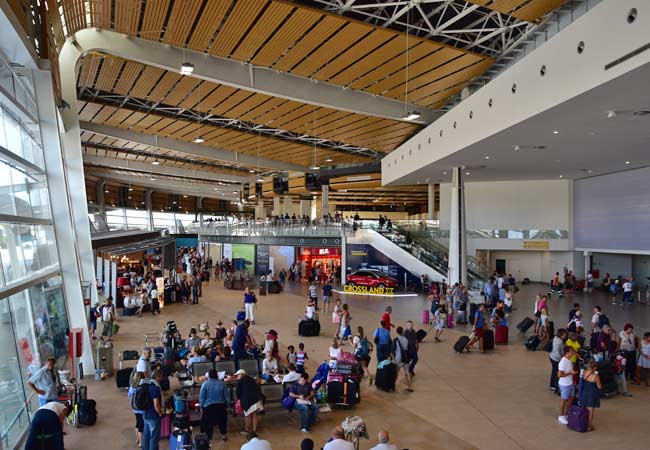
oh we were stuck in the airport!

Copenhagen was a bit expensive...

All we did was drink beer in Brussels...
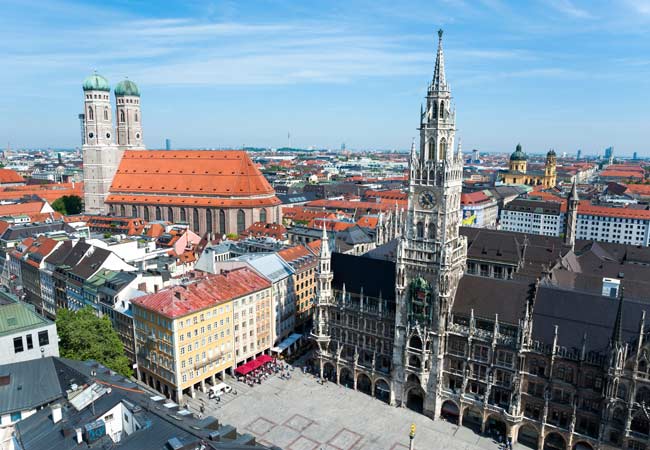
Muncih was crazy
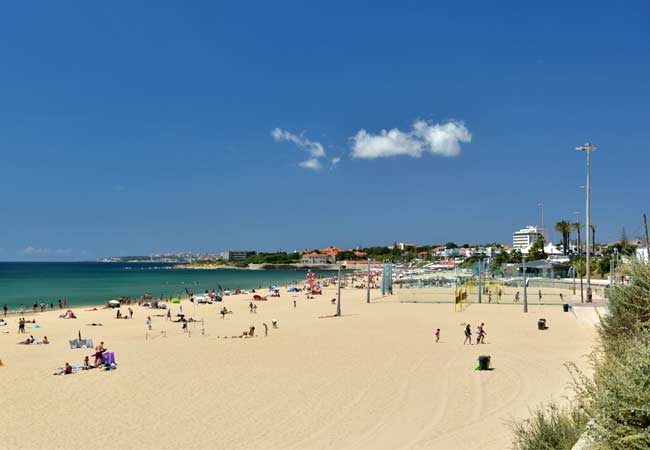
And we got so burnt!
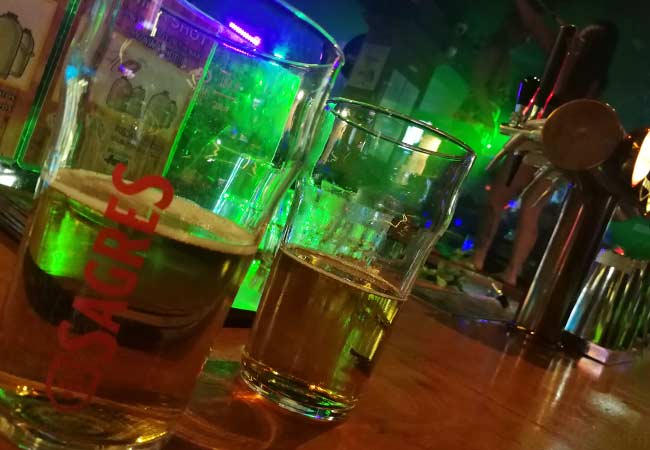
Remeber that night in Rome

oh we were stuck in the airport
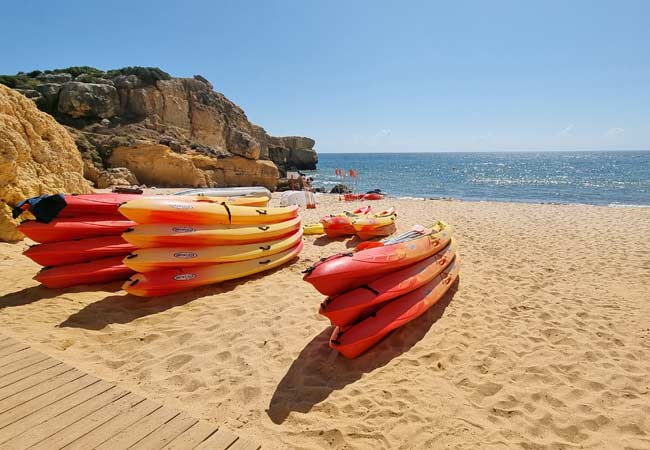
So much fun kayaking

Berlin and that group from Austria!

There was such a view from that church

And we got so burnt!

Munich was eventful, wasn't it!

Such a view from that cathedral in Florence
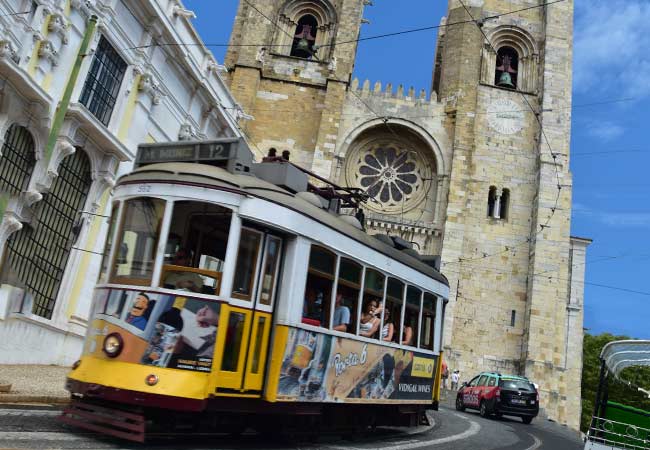
Lisbon was such so much fun

Last summer was so much fun .... x

Remeber that night in Rome

Lisbon was such so much fun

Such a view from that cathedral in Florence

Munich was eventful, wasn't it!

And we got so burnt!

Remeber that night in Rome

All we did was drink beer in Brussels...

Berlin and that group from Austria!

Can't wait to go back to Dubrovnik

Remember that boat ride in Prague

Copenhagen was a bit expensive...
